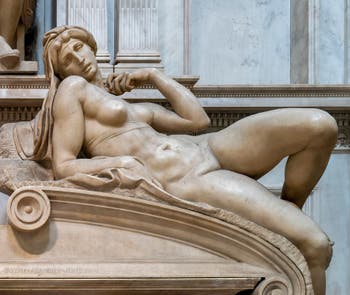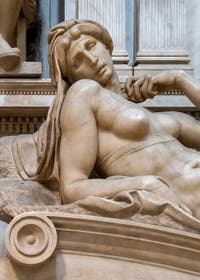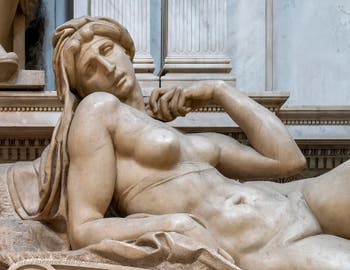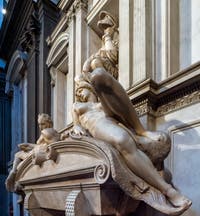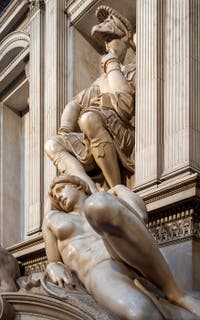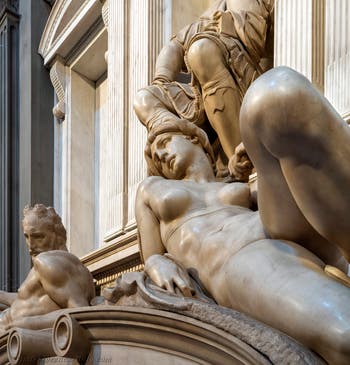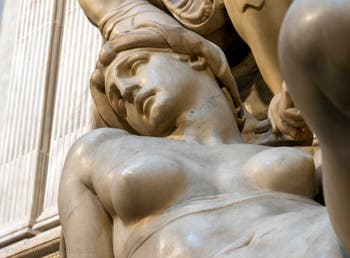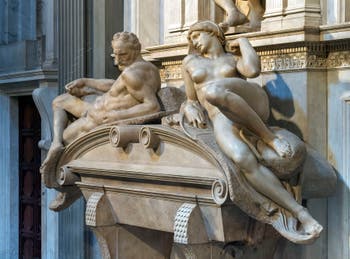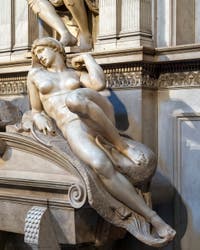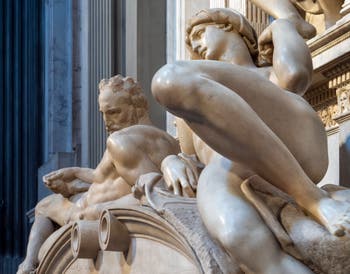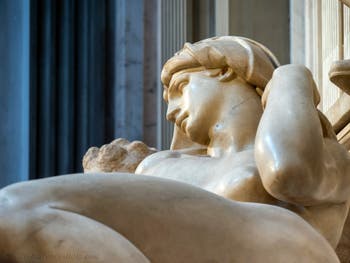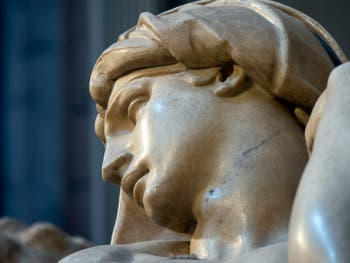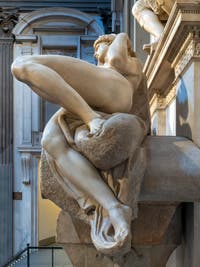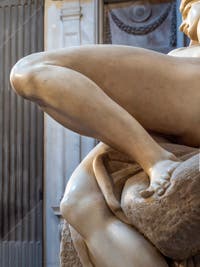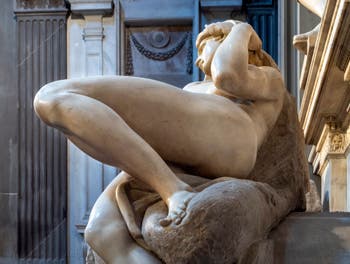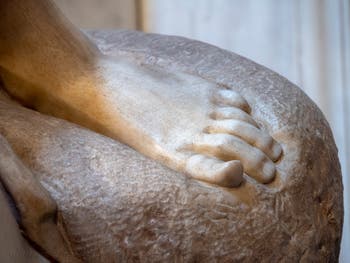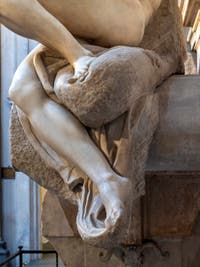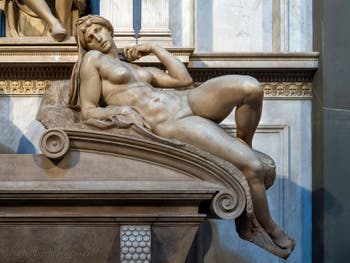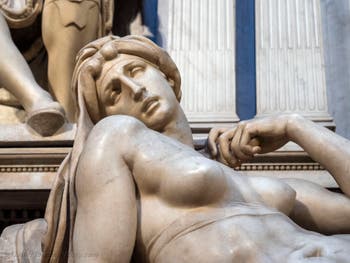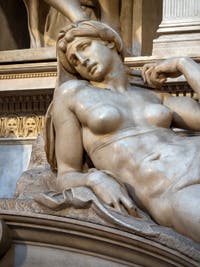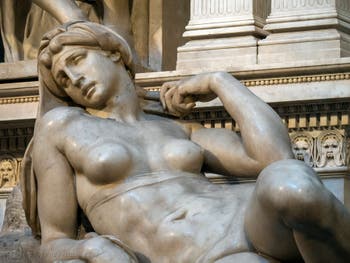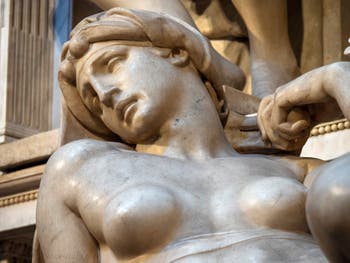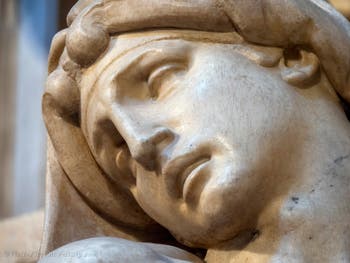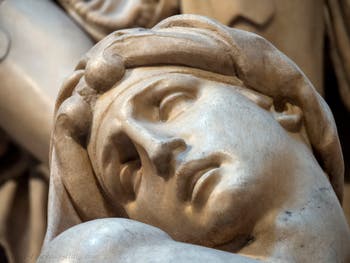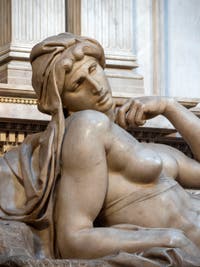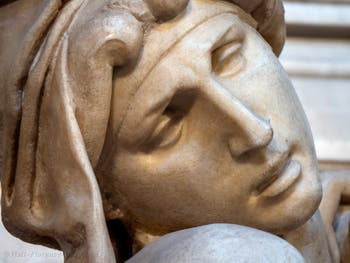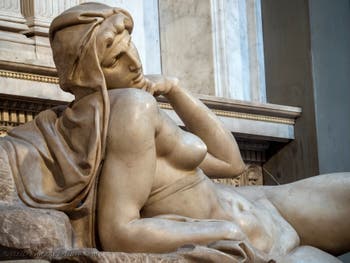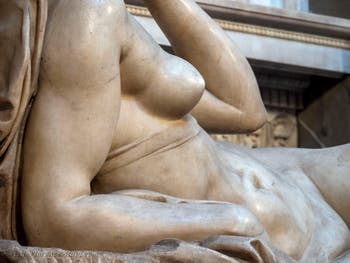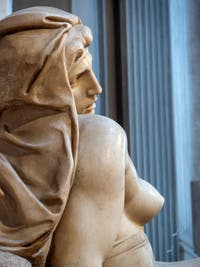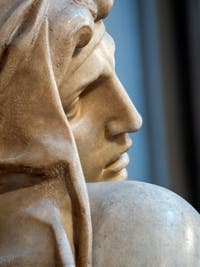Medici Prince's Chapel | Michelangelo Sacristy | Location | Opening Hours Tickets | Authorizations
Sculptures Sacristy | Lorenzo Magnificent | Dawn and Dusk | Night and Day | Michelangelo Drawings
Lorenzo's Tomb Duke Lorenzo | Dawn | Dusk
Michelangelo “Dawn” Sculpture in the New Sacristy Medici in Florence
Scultpure - Carrara marble (155 x 180 x 62 cm) 1524-1534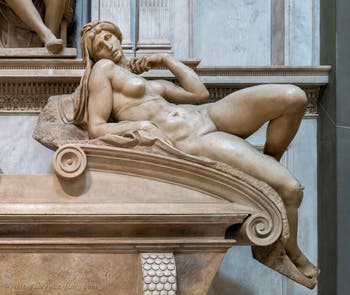
Michelangelo, Dawn “Dawn”, as well as “Dusk”, face the “Day” and “Night” that are on the opposite wall of the sacristy.
They are lying on the sarcophagus of Duke Laurent de Medici.
These two statues contain features of Michelangelo's frescoes in the Sistine Chapel in Rome.
“Dawn” is a young woman who seems to be awakening by stretching to better get out of her night torpor.
It has long been seen as a representation of the bitterness, of the world's pain, meditated by a melancholy temperament.
This interpretation was then abandoned to describe “Dawn” as the symbol of divine light that escapes from the darkness.
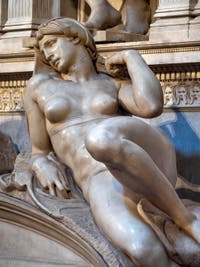
Michelangelo, Dawn Here too, as for the interpretation of the “Night” given by Michelangelo about the sad state of Florence after the assault of 1529-1530 and the fall of his Republic, some have seen the link between tyranny and the political events suffered by Florence.
The young woman's face thus expresses a form of pain, as if she had trouble awakening.
While the eyes of the two dukes and the two saints all converge on the Virgin, these four states of time represented by Michelangelo do not look at anyone; they belong only to themselves.
These four statues of “Dawn”, “Dusk”, “Day” and “Night” are here the symbol of perpetual time.
They live in a world of their own, in their abstract life, indifferent to the vicissitudes of man on earth; they represent the "always" of redemption.
Lorenzo's Tomb Duke Lorenzo | Dawn | Dusk
Sculptures Sacristy | Lorenzo Magnificent | Dawn and Dusk | Night and Day | Michelangelo Drawings
Medici Prince's Chapel | Michelangelo Sacristy | Location | Opening Hours Tickets | Authorizations
Back to Top of Page


